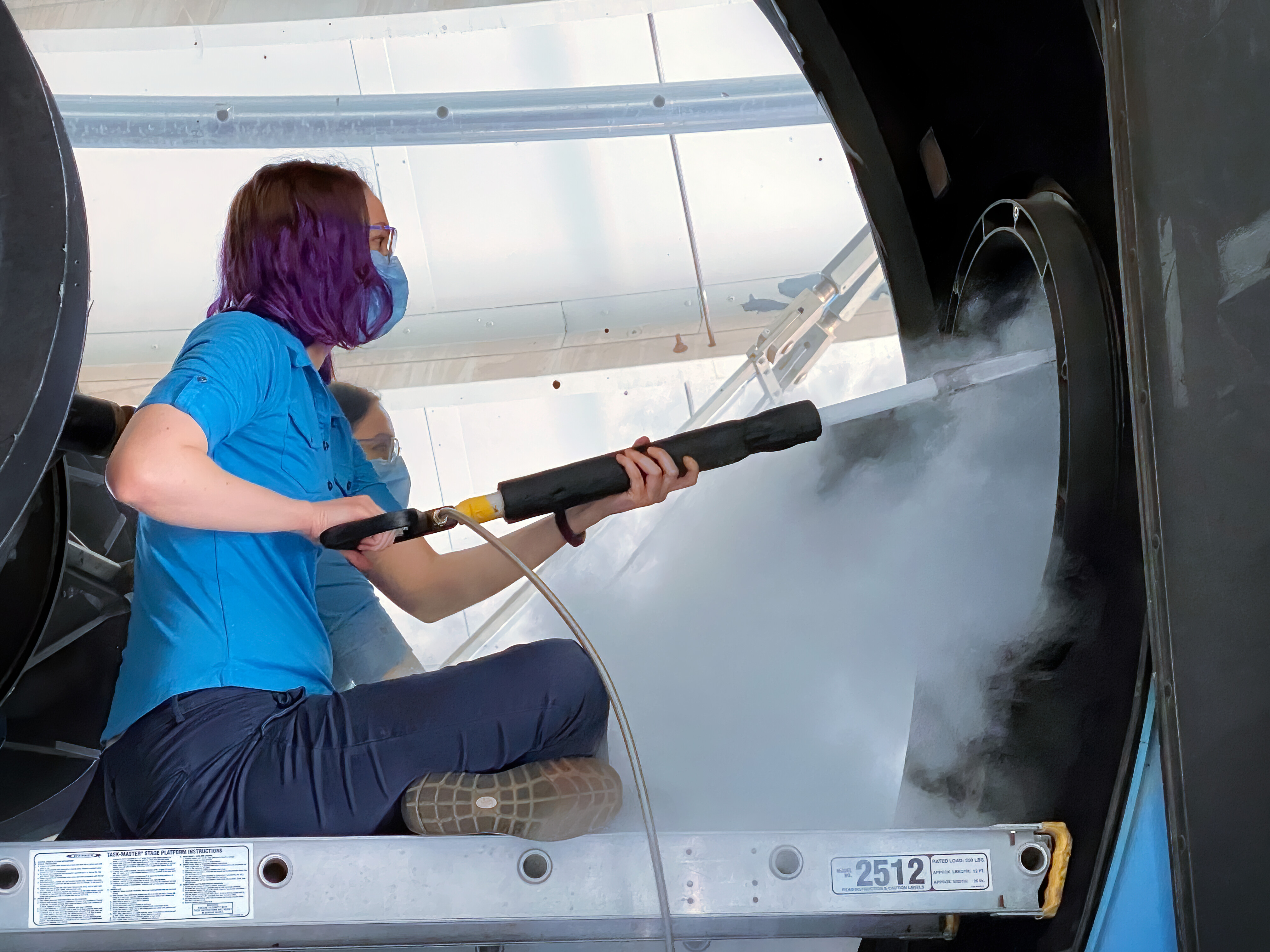In mid-September 2020, these sites all passed Phase 1 Readiness Reviews for minimal science operation. This represented the culmination of months of preparatory work by dozens of team members. The teams’ planning prioritized the safety of staff, and of our facilities and the surrounding communities, in the face of the threat from the COVID-19 pandemic.
The Gemini North telescope at Maunakea in Hawai‘i has been operational since the night of 19 May 2020 thanks to the generally lower numbers of COVID-19 cases in Hawai‘i, and many of the ideas developed and lessons learned at Gemini North are being applied to the reopening of other NOIRLab facilities.
Each of our facilities has unique requirements and timelines for restart. Once a facility begins preparations for restart, its timeline for reopening will depend on the engineering work needed to safely resume operations, and the weather. Based on the amount of preparation needed at each facility, the plan to returning to science is as follows (with some uncertainty in the dates, depending on the progress of the preparations):
-
SOAR Telescope science operations began on 7 October 2020, after completing on-sky engineering tests the night of 6 October.
-
After approximately three weeks of necessary maintenance on the facility, telescope, and instruments, the Gemini South telescope will resume limited night-time science operations in the second half of October.
-
At Cerro Tololo limited nighttime operations of the Víctor M. Blanco 4-meter Telescope resumed on 11 October. It is expected that the SMARTS 1.5-meter Telescope will resume operation by early November and that the other tenant facilities on Cerro Tololo will be progressively brought back online over the coming month.
-
At Kitt Peak National Observatory, preparatory activities are already underway, including safety inspections, deferred mountain facility maintenance, and other activities to prepare to restart the Dark Energy Spectroscopic Instrument (DESI) and the NEID spectrograph commissioning. The WIYN 3.5-meter Telescope and the DESI/Nicholas U. Mayall 4-meter Telescope are expected to resume nighttime activities by mid-November.
Limited construction activities on Cerro Pachón for Vera C. Rubin Observatory, a future Program of NOIRLab, resumed on 28 September 2020, coinciding with the easing of the quarantine restrictions for the La Serena area, and following a thorough review to ensure that summit work could resume safely. Work will ramp up gradually over the next few months to ensure the team has time to re-adapt to working on the summit, and to adjust to the new COVID-19 protocols and procedures that are now in place. During the first week of the restart, a team of approximately 15 to 20 individuals worked on the summit for three days. Activities included general inspections, dining facility improvements, preparation of equipment, and beginning the replacement of fittings inside the primary/tertiary mirror (M1M3) cell for the Simonyi Survey Telescope.
NOIRLab’s teleworking policy remains in effect at all sites for all staff who can work remotely. We are currently not hosting visitors at any of our summit or base facilities. NOIRLab will continue to closely monitor all factors influencing the restart of operations and will act according to the latest health and safety considerations at each location.
More information
NSF’s NOIRLab (National Optical-Infrared Astronomy Research Laboratory), the US center for ground-based optical-infrared astronomy, operates the international Gemini Observatory (a facility of NSF, NRC–Canada, ANID–Chile, MCTIC–Brazil, MINCyT–Argentina, and KASI–Republic of Korea), Kitt Peak National Observatory (KPNO), Cerro Tololo Inter-American Observatory (CTIO), the Community Science and Data Center (CSDC), and Vera C. Rubin Observatory. It is managed by the Association of Universities for Research in Astronomy (AURA) under a cooperative agreement with NSF and is headquartered in Tucson, Arizona. The astronomical community is honored to have the opportunity to conduct astronomical research on Iolkam Du’ag (Kitt Peak) in Arizona, on Maunakea in Hawaiʻi, and on Cerro Tololo and Cerro Pachón in Chile. We recognize and acknowledge the very significant cultural role and reverence that these sites have to the Tohono O’odham Nation, to the Native Hawaiian community, and to the local communities in Chile, respectively.
